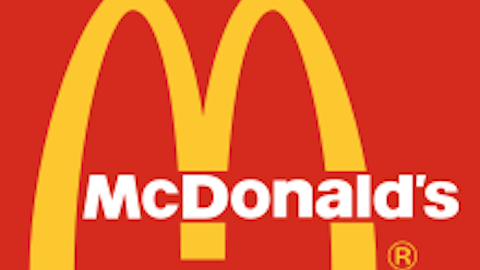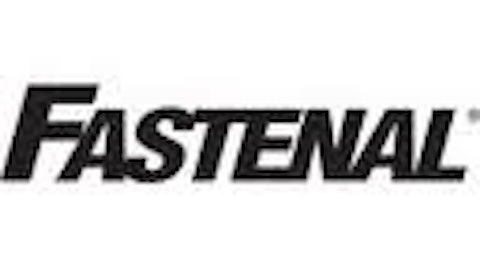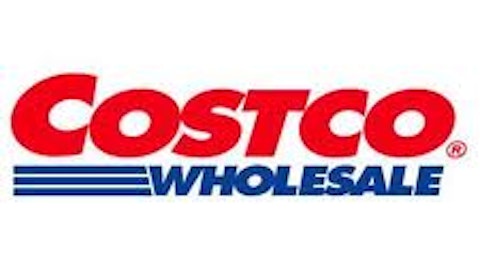If you’re an investor looking for a stock that can offer you both growth and income, one name you should immediately add to your Watchlist is The Home Depot, Inc. (NYSE:HD). To say that Home Depot has regained its former glory would be an understatement as just a few years ago many wondered if the company was still a growth story. In the last several quarters not only has Home Depot proved that it can still grow at a good pace, but the company’s commitment to dividend increases has driven the stock price as well. With a better than 2% yield and more than 14% expected earnings growth, this might be one of the better growth and income stocks available today.
Housing Is Helping but Management Should Get Most of the Credit
There’s no question that The Home Depot, Inc. (NYSE:HD) benefits as the housing market improves. As the largest purveyor of home improvement and contracting supplies, Home Depot is where homeowners begin their projects as new homes are built and sold or existing homes are upgraded.
What’s ironic is, even though Lowe’s Companies, Inc. (NYSE:LOW) operates over 1,700 stores compared to roughly 2,200 Home Depot locations, Lowe’s is clearly underperforming its larger rival. In the current quarter, overall sales at Home Depot increased by 7.4%, compared to a 0.5% decrease at Lowe’s. You would expect a better housing market to benefit both companies, but clearly customers are thinking of Home Depot first.
In addition, The Home Depot, Inc. (NYSE:HD)’s performance is particularly strong considering the increased competition from both general retailers like Wal-Mart Stores, Inc. (NYSE:WMT), and smaller specialty stores like Lumber Liquidators Holdings Inc (NYSE:LL). Wal-Mart seems to always be looking for a way to expand its business and in the last several years has expanded its home improvement selection. Lumber Liquidators Holdings Inc (NYSE:LL) is more of a specialty store that sells all types of flooring, but the company has been growing earnings and sales at a tremendous pace. With Wal-Mart squeezing prices on the low end and Lumber Liquidators offering a smaller and possibly more convenient environment, it’s surprising that Home Depot has done as well as it has.
Four Things That Make Home Depot Different From Peers
It’s one thing when companies give lip service to offering great customer service and reasonable prices, but it’s something else when a company actually delivers on these promises. Clearly, The Home Depot, Inc. (NYSE:HD) knows what its customers want as the company has consistently reported strong same-store sales growth. In fact, the only company to report faster growth in same-store sales is the much smaller Lumber Liquidators.
In the current quarter, Lumber Liquidators led the group with a same-store sales increase of 15.2%. By comparison, Home Depot reported same-store sales increased by 4.3%, whereas both Lowe’s and Wal-Mart showed a same-store sales decline. If investors want a great reason to consider sticking with, or buying, Home Depot’s shares, it has to be the company’s consistent same-store sales growth, even in difficult environments.
In similar fashion to their same-store sales performance, Home Depot’s gross margin is second only to Lumber Liquidators. Of course the difference is that Lumber Liquidators Holdings Inc (NYSE:LL) is a much smaller company that focuses on higher margin flooring sales, whereas Home Depot offers a much wider variety. That being said, Lumber Liquidators Holdings Inc (NYSE:LL) reported a gross margin of just over 40%, whereas Home Depot’s gross margin came in at 34.92%. Lowe’s finished just slightly behind Home Depot with a gross margin of 34.8%, and Wal-Mart’s focus on grocery items drove their gross margin down to 24.66%.
In a seemingly recurring theme The Home Depot, Inc. (NYSE:HD) also finished the second best when it comes to expense management. The company’s SG&A expense came in at 21.87% of revenue. The only company that was more efficient in this expense line item was Wal-Mart, and given that Wal-Mart has nearly twice the domestic locations of Home Depot, the company can stretch its fixed cost across a broader base. By comparison, Lowe’s and Lumber Liquidators Holdings Inc (NYSE:LL) reported much higher SG&A expenses at 24.62% and 29.3% respectively.
One way that Home Depot leads its peers is when it comes to producing free cash flow. When comparing companies’ free cash flow production, I like to use a number that I call free cash flow per dollar of revenue. This allows investors to get an apples to apples comparison of how these companies are producing free cash flow that can then be used for share repurchases, dividend payments, or even acquisitions.
By this measure, The Home Depot, Inc. (NYSE:HD) produced about $0.07 in core free cash flow per dollar of revenue. Core free cash flow is simply a company’s net income, plus depreciation, and then minus capital expenditures. This measure helps to eliminate some of the accounting line items on the cash flow statement that may not be actual cash expenses. For comparison purposes, only Lumber Liquidators managed to match Home Depot’s free cash flow production at $0.07. Lowe’s fell slightly behind at about $0.06, and Wal-Mart’s thinner margins led to free cash flow of about $0.03.
As you can see, The Home Depot, Inc. (NYSE:HD) is anything but just your standard retailer. With the housing market continuing to improve, and management making smart decisions, growth and income investors should feel right at home.
Chad Henage has no position in any stocks mentioned. The Motley Fool recommends Home Depot, Lowe’s, and Lumber Liquidators. The Motley Fool owns shares of Lumber Liquidators.
The article Growth and Income Investors Should Feel Right at Home originally appeared on Fool.com.
Copyright © 1995 – 2013 The Motley Fool, LLC. All rights reserved. The Motley Fool has a disclosure policy.





